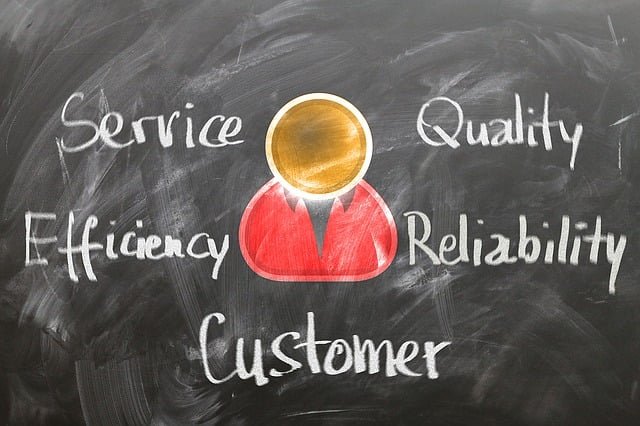
Understanding Difficult Customers
Difficult customers can be a major obstacle for companies, usually influencing not only sales but also general client relationships. Developing good plans to meet the demands of challenging clients depends on an awareness of the several kinds of them. These clients might show several bad habits, like emotional volatility, too demanding, or combative behavior. Every type brings different difficulties that call for different strategies to guarantee desired results.
One such class of challenging client is the “complainer.” Often unhappy with a good or service, this kind expresses their complaints vocally. The “aggressive” customer is another; they could turn to threats or yelling. There also exist “indecisive” consumers whose lack of decision-making could cause annoyance on both parties. Finally, the “know-it-all” might be very difficult; these consumers might claim they are correct, ignoring the knowledge of service agents.
Often, the conduct of demanding consumers has psychological roots. In a corporate context, stress, personal problems, or failed expectations might show up as frustration. Customers could be transferring their emotions onto agents rather than reacting just to the current circumstances. Effective service agents must first be able to identify these underlying emotions. Using empathy and understanding helps companies more effectively handle client issues. This method stresses active listening, which aids in the identification of emotional causes of consumer discontent.
In the end, developing good connections and good communication depend on knowing the several kinds of demanding clients and their behavioral reasons. Navigating these interactions might result in higher client satisfaction and loyalty, therefore turning possibly negative events into chances for development.
Strategies for De-escalating Tense Situations
Dealing with difficult customers often requires a plan for lowering the emotions that build up during tough interactions. Active listening is one method that works well. This means paying close attention to what the customer is saying, letting them know you hear them, and confirming that you understand their worries. For example, you can show that you understand and care by paraphrasing and describing what they said. A fight can turn into a more cooperative talk with this easy-to-use but effective trick.
Validating how the customer feels is another important tactic. Recognizing someone’s help can be a strong way to calm them down. For instance, saying something like “I know this is frustrating for you” can help the customer feel understood and cared for. Customers are more likely to let down their guard and work with you in a positive way if they feel like you are taking their feelings seriously.
In stressful contacts, also crucial is using soothing language. Speaking with a calm voice will help to greatly affect the conversational environment. Using calming language instead of aggressive ones will help to create safety. Moreover, keeping open body language and suitable eye contact can support a non-threatening environment, fostering a stronger confidence between the client and the representative.
Using these techniques—a mix of attentive listening, validating feelings, and calming language—opens a clear road for defying hostile circumstances to be avoided. Practically speaking, this means being patient, attentive, and flexible—that each client engagement is different. Through careful application of these strategies, officials can negotiate difficult circumstances more successfully, turning possible disputes into chances for peaceful resolution.
Effective Communication Techniques
Successful contacts with challenging clients depend mostly on effective communication. Encouragement of good relationships starts with a consistent message. When answering consumer questions, you should be clear and direct. Steer clear of jargon and too complicated explanations to make sure clients understand the material being given, therefore lowering possible frustration.
Customer experiences are much shaped by the tone of voice utilized in these contacts as well. Tensions can be greatly reduced, and challenging dialogues are more easily handled by a calm, sympathetic, and polite voice. Maintaining a professional and calm attitude will help customers to mirror the attitude of the agent they are interacting with, facilitating more effective communication. Saying something like “I understand your concern” can, for example, help to affirm a client’s emotions and so aid in defusing a problem.
Nonverbal signals like body language also help to transmit messages that words might not be able to communicate entirely. Keeping an open posture, consistent eye contact, and nodding will help to build involvement and confidence. This attentive approach tells the client that their issues are given importance, thereby encouraging positive communication. One should also benefit from posing open-ended inquiries. This strategy not only motivates consumers to go into more specific detail about their complaints but also lets officials compile more exact data. Inquiring questions like “Can you tell me more about your experience?” encourages additional conversation and finally helps to create a cooperative environment.
Reinterpreting client issues is another powerful tool. This exercise not only shows active listening but also helps to clear any mistakes. Saying “What I hear you saying is…,” for instance, lets the representative validate their knowledge and gives the client an opportunity to clarify or add on to their argument. Combining these communication styles helps companies negotiate difficult situations more skillfully and turn possible disagreements into chances for settlement.

Maintaining professionalism and patience
Any service-oriented sector has challenging clients as a given that experts have to carefully negotiate. Maintaining professionalism and patience will always help one to properly manage these interactions. This speaks not only of the particular worker but also of the business overall.
Maintaining a calm attitude is very important when you are in a tough situation. No matter what the customer says or does, professionals should try to stay cool and polite. This means paying attention to what the person is saying without getting angry or upset. By showing that they understand and care, the representative can ease stress and make it easier for the problem to be solved.
Keeping your emotions in check is very important when working with difficult people. When things get tough, employees should use methods like deep breathing or visualizing to help them deal with stress.
It is important to understand that the customer’s unhappiness is not an attack on you personally but rather a sign of how frustrated they are right now. Recognizing this difference lets you respond in a more objective way, which lowers the risk of making things worse.
Furthermore, encouraging a patient attitude may pay off greatly over time. Service providers who show respect and empathy will help to transform difficult circumstances into chances for good client experiences. Usually, a competent and patient answer will make clients feel appreciated, strengthening their brand loyalty. This not only helps to resolve present problems but also lays the groundwork for future more positive exchanges.
Dealing with challenging clients basically requires keeping professionalism and patience to be most effective. Professionals that give composure and respect top priority will be able to confidently and effectively negotiate even the most difficult situations, therefore improving the results for the client and the company.
Training Programs and Resources
Companies trying to improve the capacity of their staff to deal with challenging clients have access to a range of training courses and tools meant especially for this objective. Crucially in customer service professions, these training programs may provide staff members with vital skills such as effective communication, conflict resolution, and emotional intelligence.
Using organized seminars is one great way to teach. These seminars might provide engaging, hands-on learning opportunities wherein staff members could role-play situations with demanding clients. Emphasizing active listening, empathy, and problem-solving strategies, seminars help attendees to apply skills in motivating surroundings. Many training firms also provide customized seminars targeted at certain sectors, which facilitates organizations in selecting a curriculum fit for their particular situation.
Online courses provide another flexible solution for companies trying to improve the abilities of their staff in handling demanding consumers. Coursera, Udemy, and LinkedIn Learning, among other sites, provide a selection of courses covering anything from basic customer service ideas to sophisticated conflict management techniques. Because employees may study at their own speed, a customized and practical learning environment that matches their calendar is made possible.
Additionally, a great tool for both new and seasoned workers are books. Books like “The Customer Service Survival Kit” and “Crucial Conversations” provide in-depth analysis on skillfully handling challenging contacts. These materials may be made accessible for individual reading or used in line with a formal training program, therefore promoting a culture of lifelong learning.
Finally, starting mentoring initiatives helps to support peer learning. Combining seasoned mentors with staff members may provide useful advice, promote knowledge exchange, and boost staff confidence in difficult client scenarios. By using these extensive training materials, companies may greatly raise their general levels of staff satisfaction and customer service quality.
The Role of Feedback in Improvement
Particularly when handling challenging clients, feedback is very essential for the ongoing development of consumer service systems. Finding pain spots and knowing the fundamental problems causing challenging encounters requires knowledge of both consumer and staff perspectives. Organizations that aggressively seek comments may evaluate the success of their present plans and make necessary changes to raise general consumer satisfaction.
Customer feedback gives essential insights into their experiences, expectations, and views. This may be obtained via a variety of ways, including surveys, direct interviews, and social media interactions. Employees, on the other hand, might provide an inside viewpoint, offering light on the problems encountered during tough times. Their opinion is critical since they are often the front-line employees that interact directly with consumers. Organizations may better address systemic problems that lead to consumer discontent by creating an atmosphere in which workers feel comfortable expressing their perspectives.
To maximize the benefits of feedback, it is essential to analyze the collected data thoroughly. Identifying trends and recurring themes can reveal specific areas in need of improvement, whether it involves refining communication techniques, adjusting service protocols, or implementing additional training for staff. This analytical approach transforms feedback into actionable strategies that equip employees with the necessary tools for navigating challenging customer interactions more effectively.
Moreover, it is important to foster within the company a culture of ongoing learning. Employees who understand that their contributions to feedback systems result in real-world benefits participate more completely in their responsibilities, therefore strengthening the group dedication to first-rate customer service. Feedback therefore becomes a natural component of the development path of the company, driving it toward improved performance in the face of challenging client contacts.
Case Studies: Successful Resolutions
In terms of customer service, real-life situations may provide essential understanding about good resolution techniques. This part looks at a number of case studies showing effective results in difficult customer contacts, therefore highlighting the possibility for good changes with suitable methods used.
The first example is on a retail business dealing with a very furious client who got a defective item. The client first complained on social media, threatening to bring up the matter more broadly. Rather than taking a combative posture, the customer support agent got in touch with the client personally right away, apologizing for the error and sympathetically understanding her feelings. To guarantee it would be delivered the next day, they provided a substitute product at no additional cost. This proactive approach not only saved the relationship but also made the client publicly compliment the business for their quick reaction, therefore stressing the need for quick and sympathetic communication in managing problems.
In another case, a corporate customer experiencing a string of system faults caused major resistance to a software vendor. The client’s grievances became more vocal, endangering the company’s standing. The customer success manager moved right away to set up a face-to-face meeting with the client, during which they listened carefully to the complaints and admitted flaws. Until the problems were fixed, they guaranteed to provide committed technical assistance. The manager kept constant contact with the customer, informing her of developments over many weeks. The program was eventually fixed, and the client not only carried on the commercial connection but also recommended other customers. This situation emphasizes the need for direct involvement and continuous assistance in preserving customer confidence and loyalty.
These case studies show that, even in difficult situations, a customized approach to customer service may result in effective results. Businesses may convert challenging interactions into chances for establishing relationships and raising customer satisfaction by giving empathy, clear communication, and proactive follow-ups top priority. Anybody facing comparable difficulties in client contacts would find great value in such approaches.
Building Long-term Customer Relationships
Any company looking for long-term success and development must first establish and preserve strong customer ties. Effective communication, loyalty, and trust define these partnerships and help to turn difficult situations into chances for development. Businesses that tackle challenging situations with an eye toward customer concerns can find insightful information that might result in improved products and services.
Active listening is one essential tactic in developing these ties. Allowing a customer to articulate their dissatisfaction without interruption can serve as a sign that their grievances are acknowledged and appreciated. This exercise helps to reduce immediate conflicts and lays the groundwork for more fruitful conversations. Following their worries, companies should aim to show real apologies and clearly explain the actions they are taking to solve the problem, therefore underlining the value of the client to the company.
Follow-up is another vital tactic. Following a challenging scenario and getting in touch with the client to find out about their experience will help to build rapport and show that their happiness really is of great relevance. By showing sincere gratitude for their business and commitment, customized messages including thank-you notes or unique incentives help to strengthen the relationship.
Furthermore, throughout this process, gathering and using client comments is absolutely essential. Businesses can demonstrate their appreciation for consumer input by implementing suggestions or making improvements that are informed by their insights. This, in turn, will increase trust, loyalty, and retention. Constant involvement via newsletters or social media helps clients stay updated on fresh ideas, therefore empowering them and making them valuable.
Businesses that concentrate on developing long-term connections can transform difficult client contacts into chances for development and enhancement, therefore improving their brand loyalty and customer retention.
Conclusion: Embracing Challenges for Growth
Throughout this blog article, we’ve discussed numerous tactics for dealing with tough consumers and emphasized the need for adopting a solution-oriented approach. Each engagement with a difficult customer is a unique potential for advancement, not only for customer service agents but also for the firm as a whole. Professionals can turn unfavorable experiences into beneficial learning opportunities by recognizing the possibility of relationship building in these situations.
Accepting challenging customer contacts encourages employees to improve their communication and problem-solving abilities. Adopting a proactive approach reduces tension and promotes a more effective discussion with clients. It is critical to actively listen, empathize with their concerns, and seek collaborative solutions. Such tactics aid in the development of rapport and can lead to consumer loyalty, even when early interactions are tense.
Furthermore, these problems can act as an impetus for contemplation. Reflecting on the lessons acquired from bad experiences allows people to rethink their customer service tactics and adapt them for better future interactions. Continuous personal and professional development is critical in the ever-changing landscape of client expectations.
Finally, dealing with tough customers is more than just a test of patience; it’s also a means to improve one’s dispute resolution and emotional intelligence skills. By viewing each contact as an opportunity to learn and grow, professionals can improve their service skills while also positively improving the client experience. Individuals who are dedicated and open-minded can not only survive but thrive in the face of adversity, resulting in long-term benefits for both themselves and their companies.


